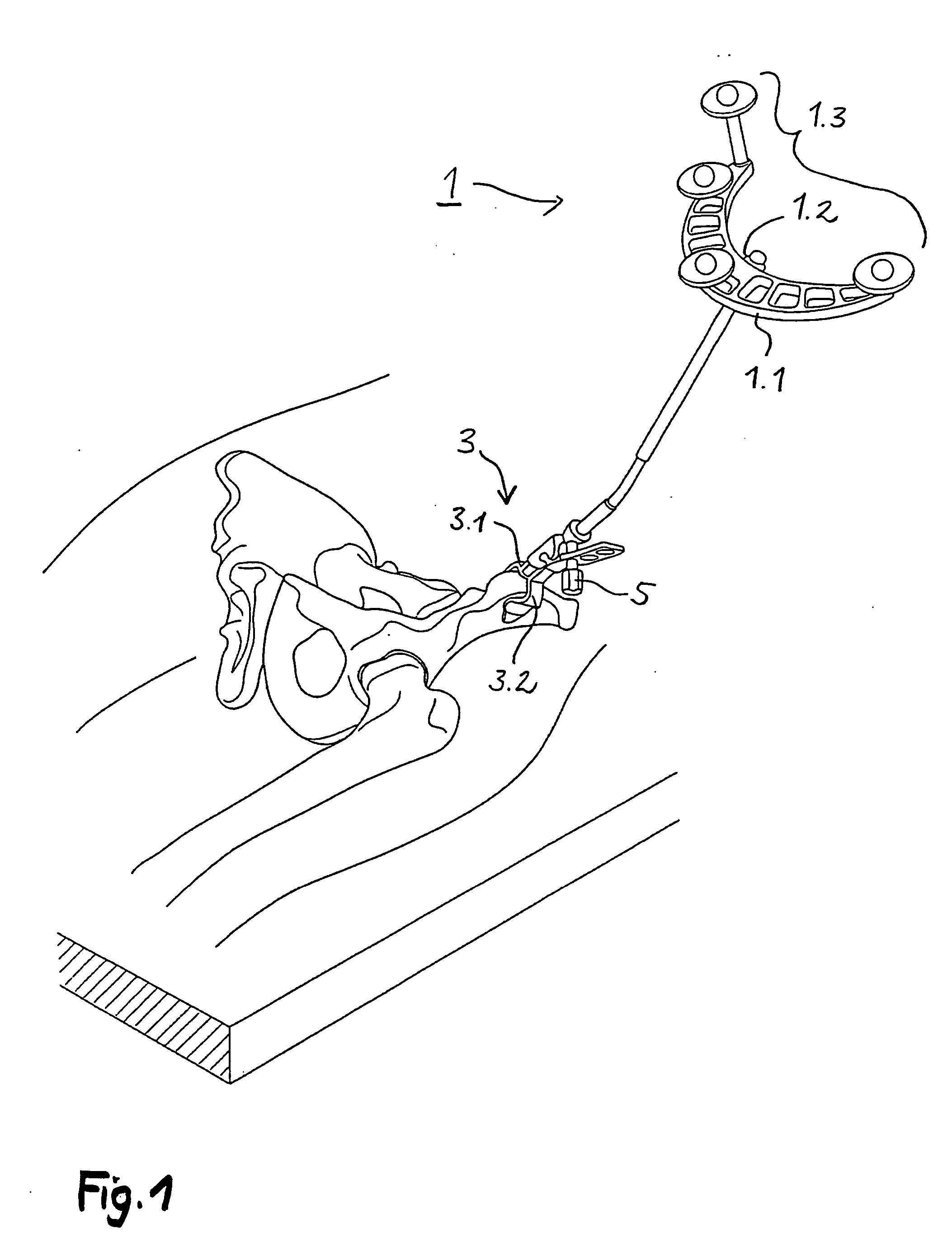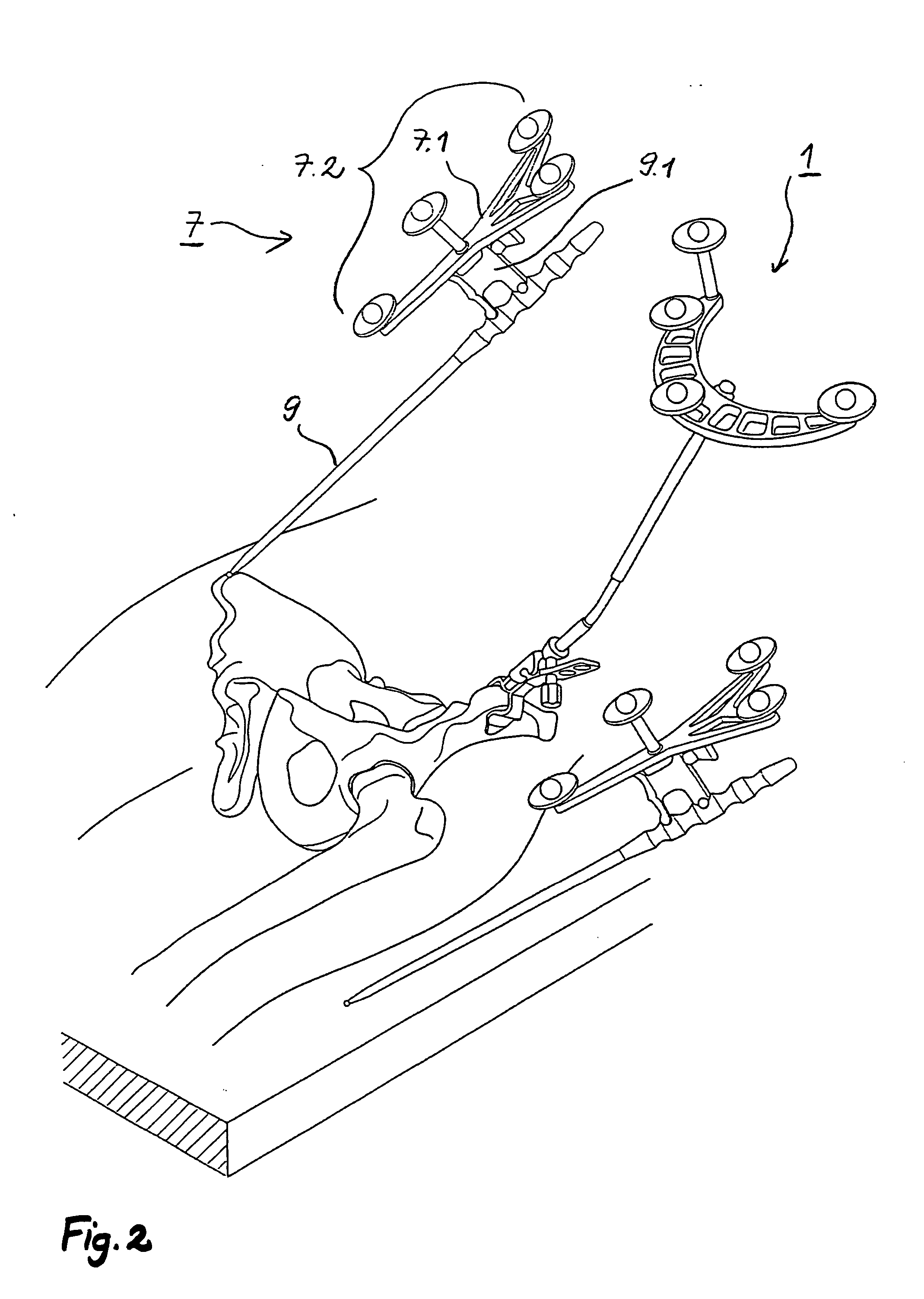Arrangement and method for the intra-operative determination of the position of a joint replacement implant
a joint replacement and position technology, applied in the field of arrangement for the intraoperative determination of the position of a joint replacement implant, can solve the problems of inability to directly transform into one another, additional risk of infection, and inability to operate quickly and easily, so as to improve the surgical effect, and reduce the risk of error
- Summary
- Abstract
- Description
- Claims
- Application Information
AI Technical Summary
Benefits of technology
Problems solved by technology
Method used
Image
Examples
Embodiment Construction
[0076] The following description is given primarily with reference to a procedure for determining the relevant geometric parameters and for implanting a hip socket, but reference is additionally made also to the determination (relatively independent thereof) of the relevant geometric parameters and the implantation of a stem component as the second component of an artificial hip joint.
[0077] The operating surgeon, when planning a hip joint implantation, needs to determine the following values for the socket:
[0078] 1. Size of the Artificial Socket
[0079] 2. Angle of Inclination and Antetorsion Angle
[0080] The two angles of alignment of the socket axis relative to the body planes are here selected on an X-ray image by the operating surgeon in accordance with medical standpoints. These angles can likewise be modified by the operating surgeon intra-operatively.
[0081] 3. Angle in the Sagittal Body Plane Between Vertical Axis and the Direction from the Iliac Crest to the Symphisis.
[0...
PUM
 Login to View More
Login to View More Abstract
Description
Claims
Application Information
 Login to View More
Login to View More - R&D
- Intellectual Property
- Life Sciences
- Materials
- Tech Scout
- Unparalleled Data Quality
- Higher Quality Content
- 60% Fewer Hallucinations
Browse by: Latest US Patents, China's latest patents, Technical Efficacy Thesaurus, Application Domain, Technology Topic, Popular Technical Reports.
© 2025 PatSnap. All rights reserved.Legal|Privacy policy|Modern Slavery Act Transparency Statement|Sitemap|About US| Contact US: help@patsnap.com



